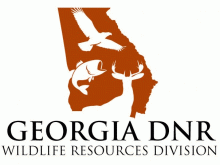
Today marks the 30th anniversary of the signing of the North American Wetlands Conservation Act, or NAWCA.
Date: December 10, 2019 Author: Georgia DNR, Wildlife Resources Division
Today marks the 30th anniversary of the signing of the North American Wetlands Conservation Act, or NAWCA.
It’s not just a feat of time, but a celebration of waterfowl conservation successes across North America over the past 30 years. The past three decades have included the acquisition and restoration of wetland habitat in the U.S., Canada, and Mexico, which provided healthy wetlands where:
- Waterfowl populations have increased
- Waterways and water sources are cleaner
- Recreational opportunities (birding, hunting, hiking and boating) have all increased
Through wildlife science, boots-on-the-ground fieldwork, outreach, and policy engagement, NAWCA has demonstrated how continental-scale conservation can be achieved.
What is NAWCA?
NAWCA is a grant program that was passed, in part, to support the North American Waterfowl Management Plan. The plan is an international agreement and strategy for long-term wetlands and habitat protection to benefit waterfowl and other migratory birds in North America.
NAWCA by the Numbers
Over the years, NAWCA has funded over 2,950 projects, including the Altamaha River Corridor Habitat Conservation Project, totaling:
- $1.73 billion in grants in addition to the
- $3.57 billion in matching funds that more than
- 6,200 partners have contributed to support
- 30 million acres of habitat.
NAWCA grants increase bird populations and wetland habitat while supporting local economies and American traditions such as hunting, fishing, bird watching, and agriculture. Wetlands protected by NAWCA provide valuable benefits such as flood control, coastal erosion reduction, water and air quality improvement, and recharged ground water. When waterfowl and wetlands win, we all win.
